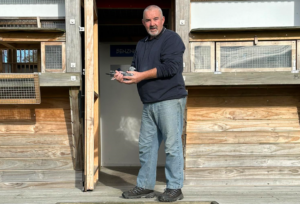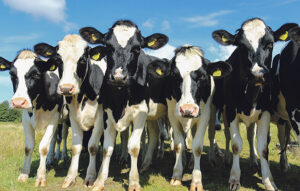“The straw that broke the camel’s back” was how a local farming spokesperson described a new government proposal to reduce agricultural emissions.
The “world-first” plan, announced by the government on October 11 and currently open for consultation, will make farmers pay for their emissions from 2025 to meet government agricultural methane reduction targets by 2030.
Hauraki-Coromandel Federated Farmers president Robert Craw told The Profile the government plan would be “the straw that broke the camel’s back” for many farmers in the area and may cause them to abandon farming.
“It would be devastating, the rural communities at the moment are struggling to hold it together anyway and are becoming more and more isolated due to logistical issues,” he said.
“If this was to unfold the way [of the] worst case scenario of more families exiting rural communities, you’re going to lose the fight against pine trees [replacing farmland], that’s where it would go.”
Federated Farmers said the plan aimed to reduce sheep and beef farming in New Zealand by 20 per cent and dairy farming by five per cent to achieve greenhouse gas emissions targets.
“Any remaining dry stock farms will pretty much go out of business, I’m not 100 per cent sure how the dairy guys would be poised to absorb that cost, but it’s just detrimental to the industries across the board,” Mr Craw said.
“We’re already the most efficient farmers in the world yet we’re going to be the ones who are going to get hammered through this and we’re going to lose our market share, and we’re never going to get them back, which is hugley concerning.
“We’ll lose that production to countries who are producing food at a far greater carbon footprint to us and far less efficient than us.”
The government said it accepted most of the recommendations made by the He Waka Eke Noa Partnership, which included government departments, iwi, Māori and primary sector organisations like Federated Farmers.
The government also incorporated feedback from the Climate Change Commission.
According to the consultation document, Te tātai utu o ngā tukunga ahuwhenua – Pricing Agricultural Emissions, the He Waka Eke Noa partnership was established in 2020 to take action to reduce agricultural emissions and support the transition to farm-level emissions pricing from 2025.
But some recommendations, which included farmers setting their own emission prices, was rejected by the government.
Mr Craw said the decision was “frustrating from a Federated Farmers point of view”. “This reaction from the government pretty much takes away all the good stuff that was making [the plan] workable and kicking that to the curb and adding some more nasty stuff which makes the whole thing unworkable,” he said.
“The concern is who is going to set the emission pricing now. If they can put a group together of the industry bodies that can come up with a tangible calculation to set those pricings then we could look at accepting that.
“But if the government’s going to pull a number out and slap that on the table then that’s very concerning.”
According to the consultation document, the decision was made to ensure levy rates are more aligned with emissions pricing for the broader economy of emission reduction targets in New Zealand.
The final decision on levy prices would be informed by advice from the Climate Change Commission and set following consultation with iwi, Māori and the agriculture sector, according to the consultation document.
The recommendation for farmers being financially rewarded for on-farm sequestration, such as planting trees next to rivers, was also not put forward by the government.
According to the consultation document, the government proposed an alternative pathway to recognise sequestration with a short-term solution that could recognise additional vegetation on farms in 2025, which will transition to the New Zealand Emissions Trading Scheme.
Mr Craw said the move was a “big concern” and that forestry replacing Hauraki-Coromandel farms could now be “a reality”.
“We’re the only country in the world that allows 100 per cent offsetting, and that’s why we’re having a lot of forestation,” he said.
“The worst part about all this is when you speak to the guys who are crunching the numbers, we’re already on this road of improvement, it’s been happening for years, we’re getting better and better at it and our trajectory is looking really good.
“There’s been a lot of planting going on, there’s been a lot of land retirement and genetics as well, but there’s no silver bullet… there’s a lot of little things that all go hand in hand to improve or reduce our emission output.”
Consultation for the plan closes on November 18 and once submissions are considered, final proposals will go to ministers for approval next year.
“There’s going to be some backlash coming, I can assure you of that, this is only the start of the process and when you’ve got a bunch of farmers who are ticked off, you’re going to see some reactions pretty quick,” Mr Craw said.
DETAILS: For more information contact agemissionspricing@mfe.govt.nz.

Forestry replacing Hauraki-Coromandel farms could now be “a reality”, Fed Farmers says. File Photo: UNSPLASH



